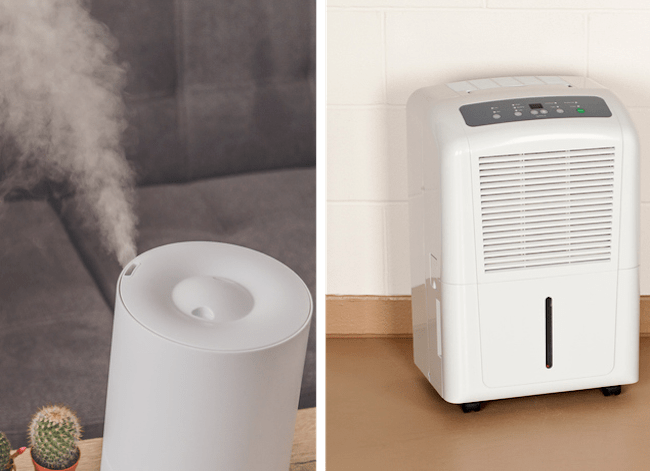

We may earn revenue from the products available on this page and participate in affiliate programs. Learn More ›
Humidifiers help increase the moisture content in a room. Many individuals rely on humidifiers to combat dry skin and lips, and lessen congestion and other cold and flu symptoms, especially during dry winter months. While a warm-mist humidifier requires hot water to produce water vapor, a cool-mist humidifier is considered a safer alternative since it does not require the use of boiling water.
There are two types of cool-mist humidifiers: ultrasonic and evaporative. They work in very different ways to produce water vapor and increase humidity in a room. Learning the differences makes it easier to decide which type of humidifier is best for your situation.
What is an ultrasonic humidifier?
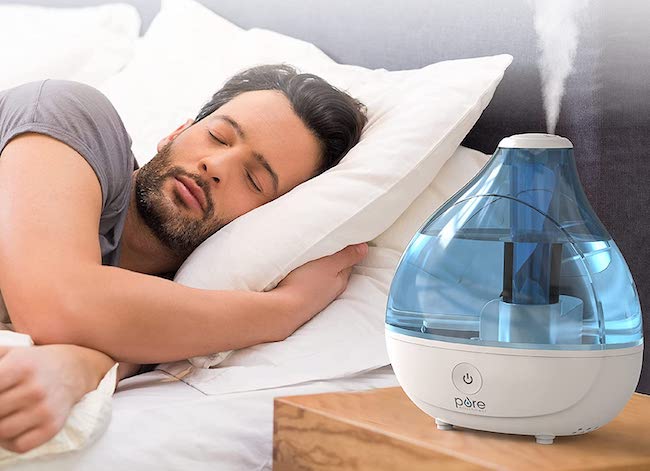
One of the key differences you’ll notice when you’re researching vaporizer vs. humidifier is the way the water vapor is made. Unlike vaporizers and warm-mist humidifiers that boil water to make steam, ultrasonic humidifiers do not have a heating element and are considered a type of cool-mist humidifier.
Ultrasonic humidifiers expel an ultra-fine mist into the air through the use of high-frequency sound vibrations of the two inner ceramic plates. After the tiny water droplets are released into the room, they evaporate. As they continue to release into the room, they increase the humidity in the space.
What is an evaporative humidifier?
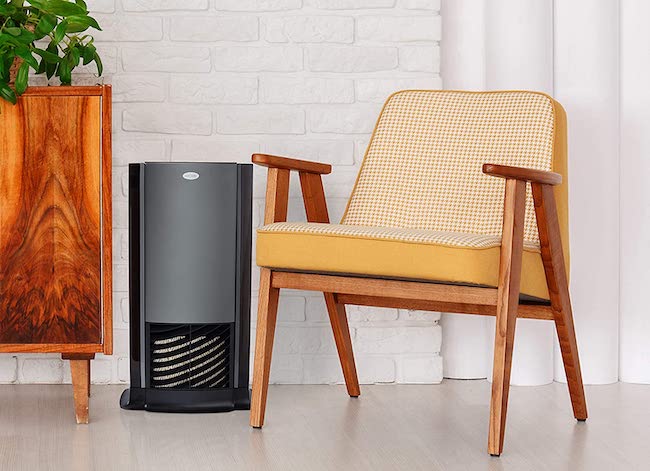
While also considered to be a cool-mist humidifier, evaporative humidifiers work quite differently from ultrasonic humidifiers. They rely on the basic principles of evaporation to increase the moisture content in a room. When you place a large bowl of water in a room, the water will evaporate and make the room more humid.
Evaporative humidifiers speed up this natural process of evaporation by using a fan and a wick filter. The fan in the humidifier pulls in air and blows it through the wick filter at the humidifier’s base. This causes the water to evaporate and turn into water vapor. The water vapor is then pushed into the room to increase its humidity.
Differences Between Ultrasonic and Evaporative Humidifiers
| Evaporative Humidifiers | Ultrasonic Humidifiers | |
| Ease of Cleaning | Regular filter maintenance to prevent mold | Frequent cleaning to prevent bacterial growth |
| Energy Efficient | ❌ | ✅ |
| Large Coverage Area | ✅ | ❌ |
| Noise Level | ❌ (noisy fan) | ✅ (super quiet) |
| Cost | Higher upfront cost (and needs replacement filters) | Lower upfront cost (and less maintenance) |
| Air Quality | ✅ (filters) | ❌ (can release white dust if used with hard water) |
| Design | Large and less portable | Compact and lightweight |
Ultrasonic humidifiers can disperse minerals and other contaminants into the air.
Because ultrasonic humidifiers don’t have a filter, any minerals or contaminants found in the water used to fill their tank will also be released into the air. Calcium, magnesium, potassium, and other minerals are all commonly found in tap water. These minerals are released as gray or white dust that may settle on the flooring or furniture in the space. How much dust gets released can vary based on the water used. For example, hard water has a higher mineral content, so it can yield more dust.
The EPA recommends using distilled water to fill an ultrasonic humidifier’s tank. Distilled water still contains some minerals, but at a much lower concentration than tap water. Using distilled water not only reduces the amount of gray or white dust released by a humidifier, it will also decrease mineral deposits and scale inside the humidifier. Without regular cleaning, the humidifier’s insides can become a breeding ground for bacteria and microorganisms.
Ultrasonic humidifiers tend to be more aesthetically pleasing.
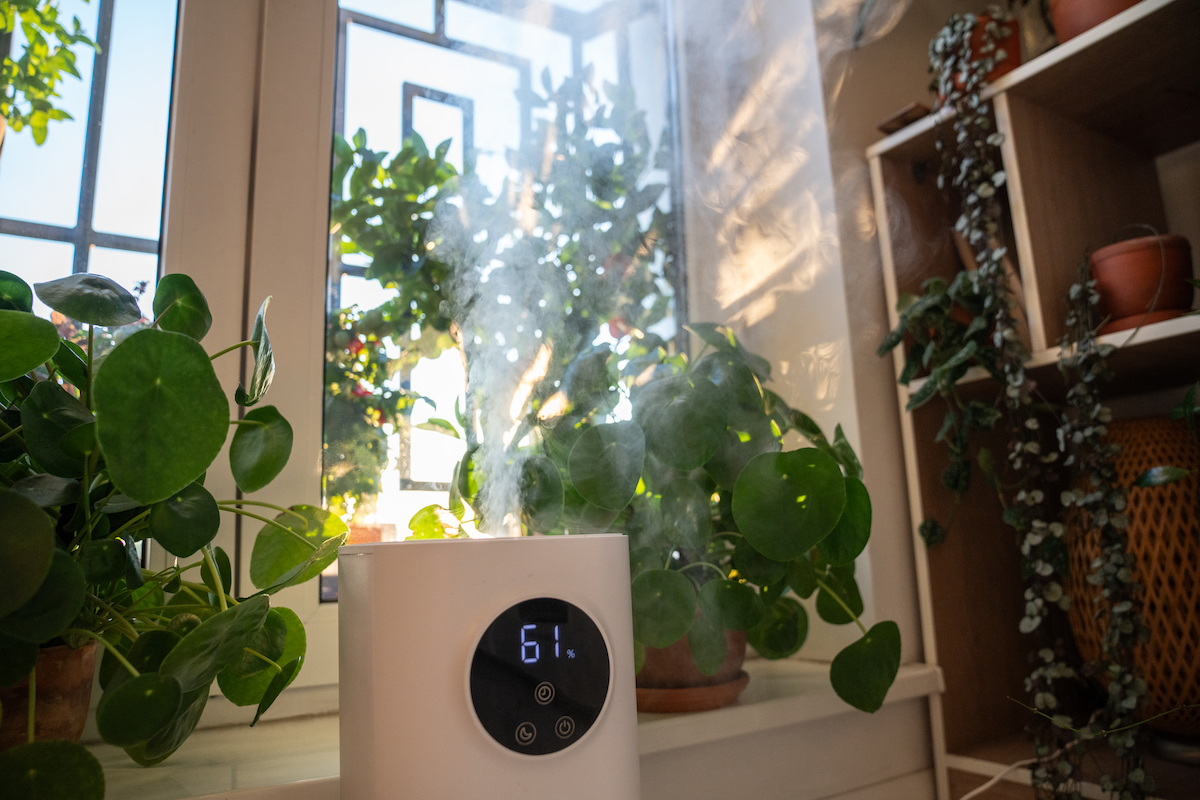
When considering a humidifier room strategy and aesthetic appeal, many prefer the look of ultrasonic humidifiers. Evaporative humidifiers are generally bulkier since they have to hold a fan and a filter; the humidification device of an ultrasonic humidifier is much more compact. Those looking for a small humidifier will typically have a much easier time finding an ultrasonic model than an evaporative model.
Ultrasonic humidifiers may also offer additional features that add to their aesthetic appeal, such as a built-in clock or colored LED night lights.
Evaporative humidifiers require filter maintenance.
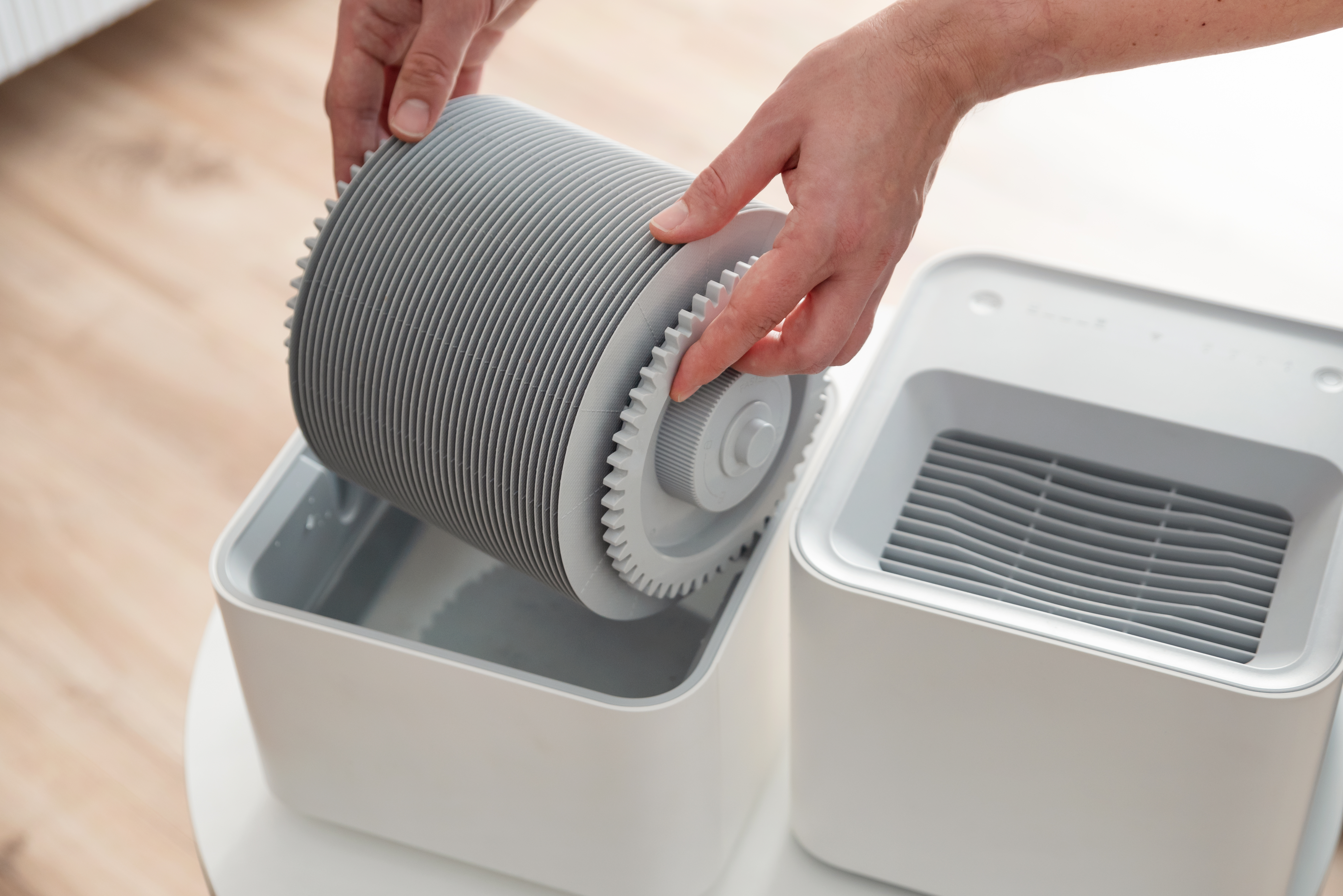
The filter in an evaporative humidifier works to reduce the amount of mineral dust released. However, filters also mean that you’ll have to monitor and replace the filter regularly. How often you use a humidifier will impact how often you’ll need to replace the filter, but manufacturers usually recommend using a new filter every 1 to 3 months.
Both evaporative and ultrasonic humidifiers need to be cleaned regularly, which is at least once a week. This will help remove mineral buildup and prevent the growth of bacteria. White vinegar mixed with water can be quite effective for cleaning a humidifier, but be sure to consult with the care instructions for the specific model you purchase.
Ultrasonic and Evaporative Humidifiers: Our Top Picks
Best Evaporative Humidifier
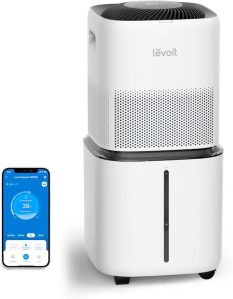
Our Recommendation: Levoit Superior 6000S Smart Evaporative Humidifier – Get at Amazon for $249.99.
This evaporative humidifier from Levoit is our favorite humidifier for large rooms, suitable for areas up to 3,000 square feet, so it’s a great option for a large family home or an open space. It features multiple settings and an internal dispersal fan to provide an even spread. You’ll also be thrilled to hear that this model works with regular tap water, thanks to its filter, so you don’t need to worry about keeping a stock of distilled water.
Best Ultrasonic Humidifier
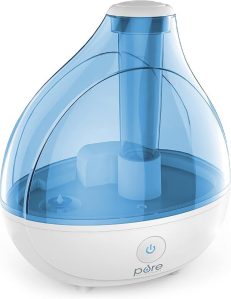
Our Recommendation: Pure Enrichment MistAire Ultrasonic Cool Mist Humidifier – Get at Amazon for $39.99
This ultrasonic humidifier offers up to 25 hours of constant quiet operation with its 1.5-liter tank. The 360-degree nozzle and two speed settings work together to ensure that the ideal amount of mist is released into the room to match your humidity needs. The humidifier also features a night light setting and automatic safety shut-off feature. It received the Best Bang for the Buck designation in our researched guide to the best room humidifiers.
Ultrasonic humidifiers are quieter than evaporative humidifiers.
As their name implies, ultrasonic humidifiers use sound waves with a high frequency. Human ears are not able to detect such a high frequency, which means that an ultrasonic humidifier is quiet. If you’re looking for a bedroom humidifier, choosing an ultrasonic model will help ensure that your humidifier doesn’t disrupt your sleep. A standard ultrasonic unit will operate below 30 decibels, making them virtually silent.
While some evaporative humidifiers are louder than others, all evaporative humidifiers will produce some sound because they use a fan to help the water evaporate more quickly. The fan runs constantly, so models with a quieter fan will still be louder than an ultrasonic humidifier. Most models will range between 28 and 45 decibels, depending on the fan speed, which may be better if you prefer a little white noise while you sleep.
Evaporative humidifiers tend to cost less than their ultrasonic counterparts.
Ultrasonic humidifiers are usually cheaper than larger evaporative models. The difference being, though, is that ultrasonic models are usually a lot smaller and less capable of handling large spaces.
| Average Price | |
| Evaporative Humidifiers | $290 |
| Ultrasonic Humidifiers | $68 |
Beyond the initial cost of evaporative and ultrasonic humidifiers, there is also the cost of filter replacements to consider. While ultrasonic models do not require a filter, the filter in an evaporative humidifier will need to be changed every 1 to 3 months. Replacement filters are relatively inexpensive, but the cost can add up over several months or years of operation and may eventually lead to evaporative humidifiers becoming a pricier investment.
